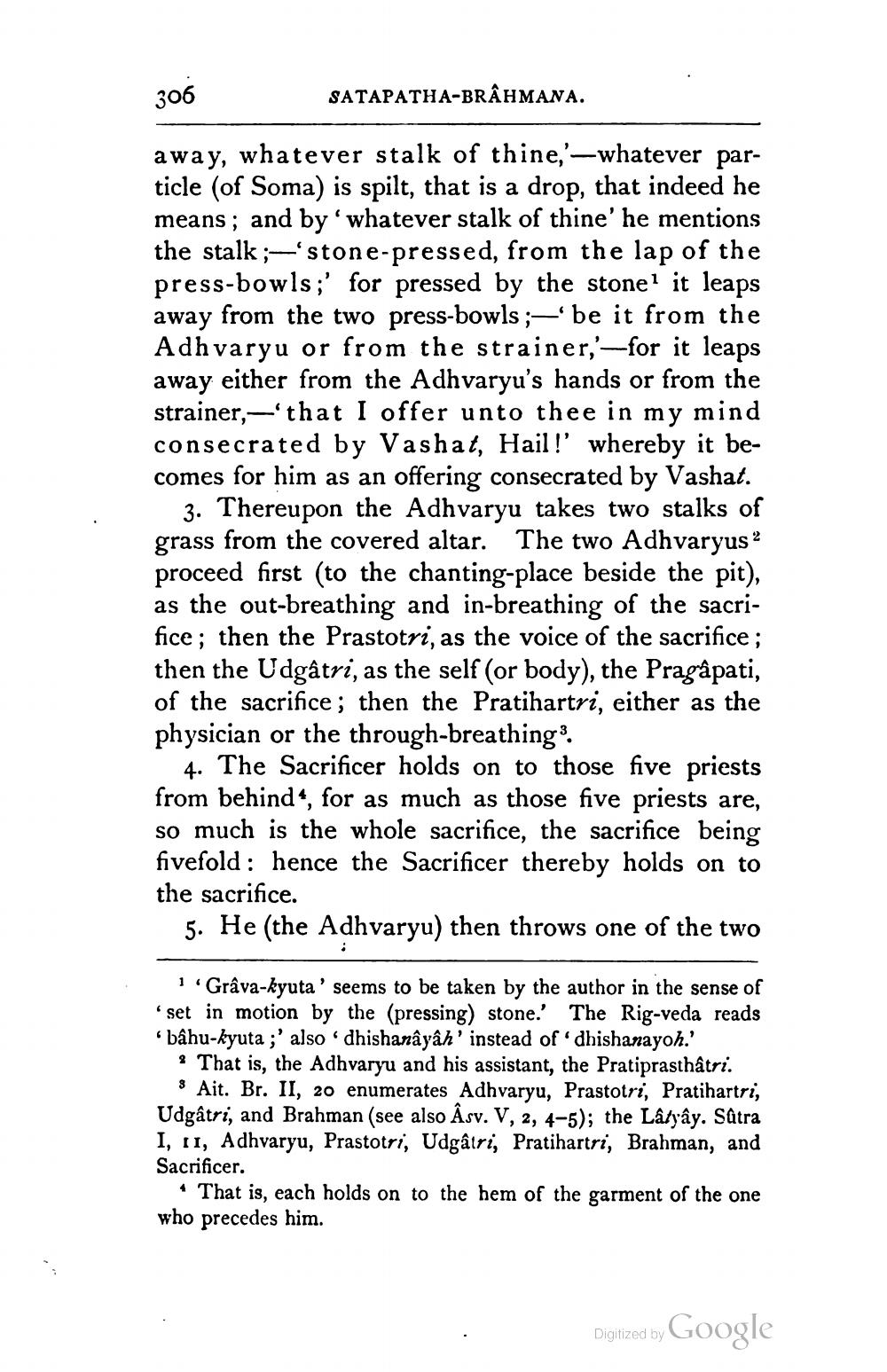________________
306
SATAPATHA-BRAHMANA.
away, whatever stalk of thine,'—whatever particle (of Soma) is spilt, that is a drop, that indeed he means; and by whatever stalk of thine' he mentions the stalk;—'stone-pressed, from the lap of the press-bowls;' for pressed by the stone! it leaps away from the two press-bowls ;—be it from the Adhvaryu or from the strainer,'--for it leaps away either from the Adhvaryu's hands or from the strainer,—'that I offer unto thee in my mind consecrated by Vashat, Hail!' whereby it becomes for him as an offering consecrated by Vashat.
3. Thereupon the Adhvaryu takes two stalks of grass from the covered altar. The two Adhvaryus 2 proceed first (to the chanting-place beside the pit), as the out-breathing and in-breathing of the sacrifice; then the Prastotri, as the voice of the sacrifice; then the Udgâtri, as the self (or body), the Pragâpati, of the sacrifice; then the Pratihartri, either as the physician or the through-breathing.
4. The Sacrificer holds on to those five priests from behind“, for as much as those five priests are, so much is the whole sacrifice, the sacrifice being fivefold: hence the Sacrificer thereby holds on to the sacrifice.
5. He (the Adhvaryu) then throws one of the two
1 Grâva-kyuta' seems to be taken by the author in the sense of set in motion by the (pressing) stone. The Rig-veda reads bâhu-kyuta ;' also dhishanâyâh' instead of 'dhishanayoh.' ? That is, the Adhvaryu and his assistant, the Pratiprasthâtri.
8 Ait. Br. II, 20 enumerates Adhvaryu, Prastotri, Pratihartri, Udgâtri, and Brahman (see also Asv. V, 2, 4-5); the Ladyây. Satra I, II, Adhvaryu, Prastotri, Udgâtri, Pratihartri, Brahman, and Sacrificer.
• That is, each holds on to the hem of the garment of the one who precedes him.
Digitized by Google




